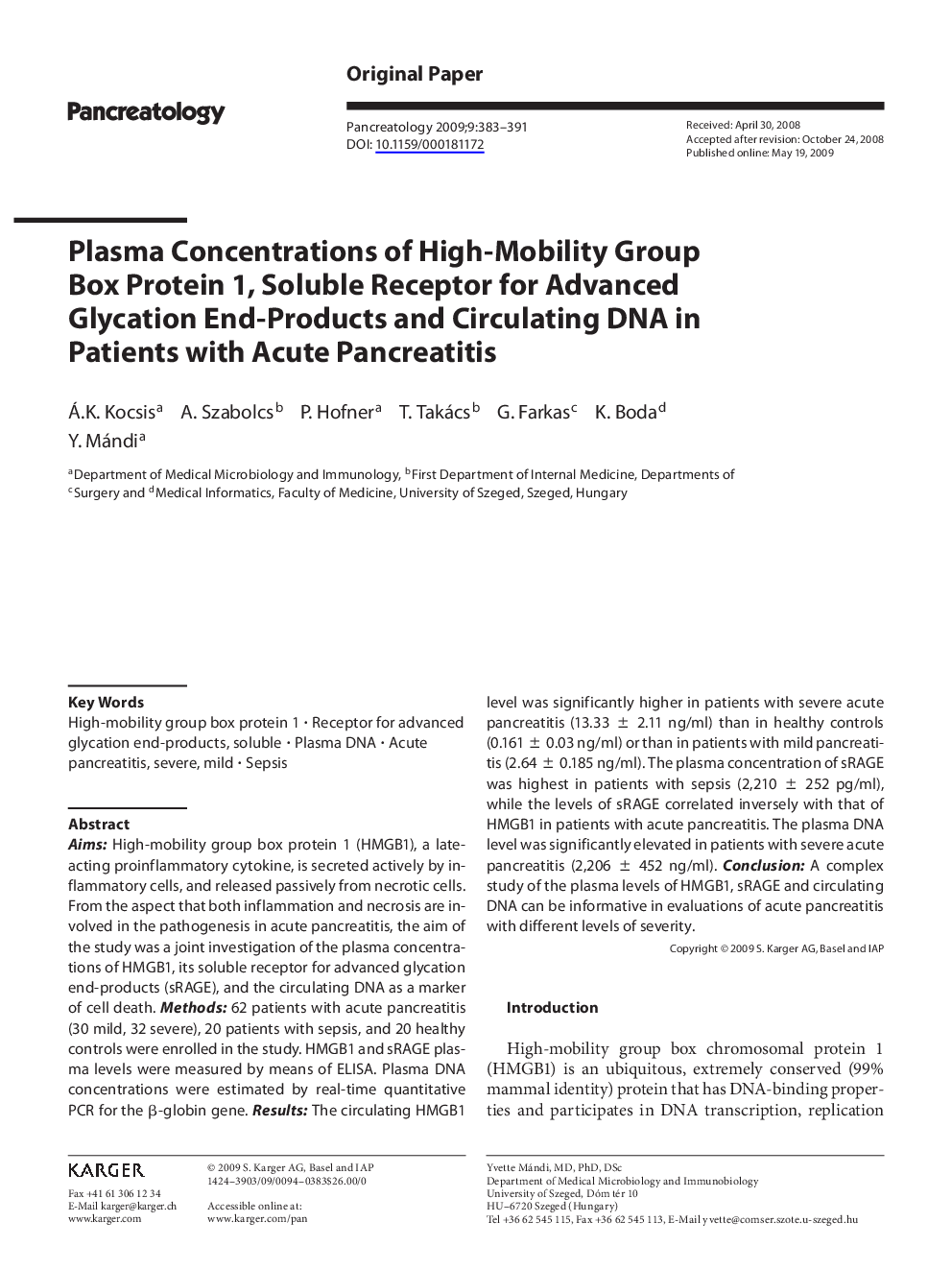| Article ID | Journal | Published Year | Pages | File Type |
|---|---|---|---|---|
| 3318395 | Pancreatology | 2009 | 9 Pages |
Abstract
Aims: High-mobility group box protein 1 (HMGB1), a late-acting proinflammatory cytokine, is secreted actively by inflammatory cells, and released passively from necrotic cells. From the aspect that both inflammation and necrosis are involved in the pathogenesis in acute pancreatitis, the aim of the study was a joint investigation of the plasma concentrations of HMGB1, its soluble receptor for advanced glycation end-products (sRAGE), and the circulating DNA as a marker of cell death. Methods: 62 patients with acute pancreatitis (30 mild, 32 severe), 20 patients with sepsis, and 20 healthy controls were enrolled in the study. HMGB1 and sRAGE plasma levels were measured by means of ELISA. Plasma DNA concentrations were estimated by real-time quantitative PCR for the β-globin gene. Results: The circulating HMGB1 level was significantly higher in patients with severe acute pancreatitis (13.33 ± 2.11 ng/ml) than in healthy controls (0.161 ± 0.03 ng/ml) or than in patients with mild pancreatitis (2.64 ± 0.185 ng/ml). The plasma concentration of sRAGE was highest in patients with sepsis (2,210 ± 252 pg/ml), while the levels of sRAGE correlated inversely with that of HMGB1 in patients with acute pancreatitis. The plasma DNA level was significantly elevated in patients with severe acute pancreatitis (2,206 ± 452 ng/ml). Conclusion: A complex study of the plasma levels of HMGB1, sRAGE and circulating DNA can be informative in evaluations of acute pancreatitis with different levels of severity.
Keywords
Related Topics
Health Sciences
Medicine and Dentistry
Gastroenterology
Authors
Á.K. Kocsis, A. Szabolcs, P. Hofner, T. Takács, G. Farkas, K. Boda, Y. Mándi,
